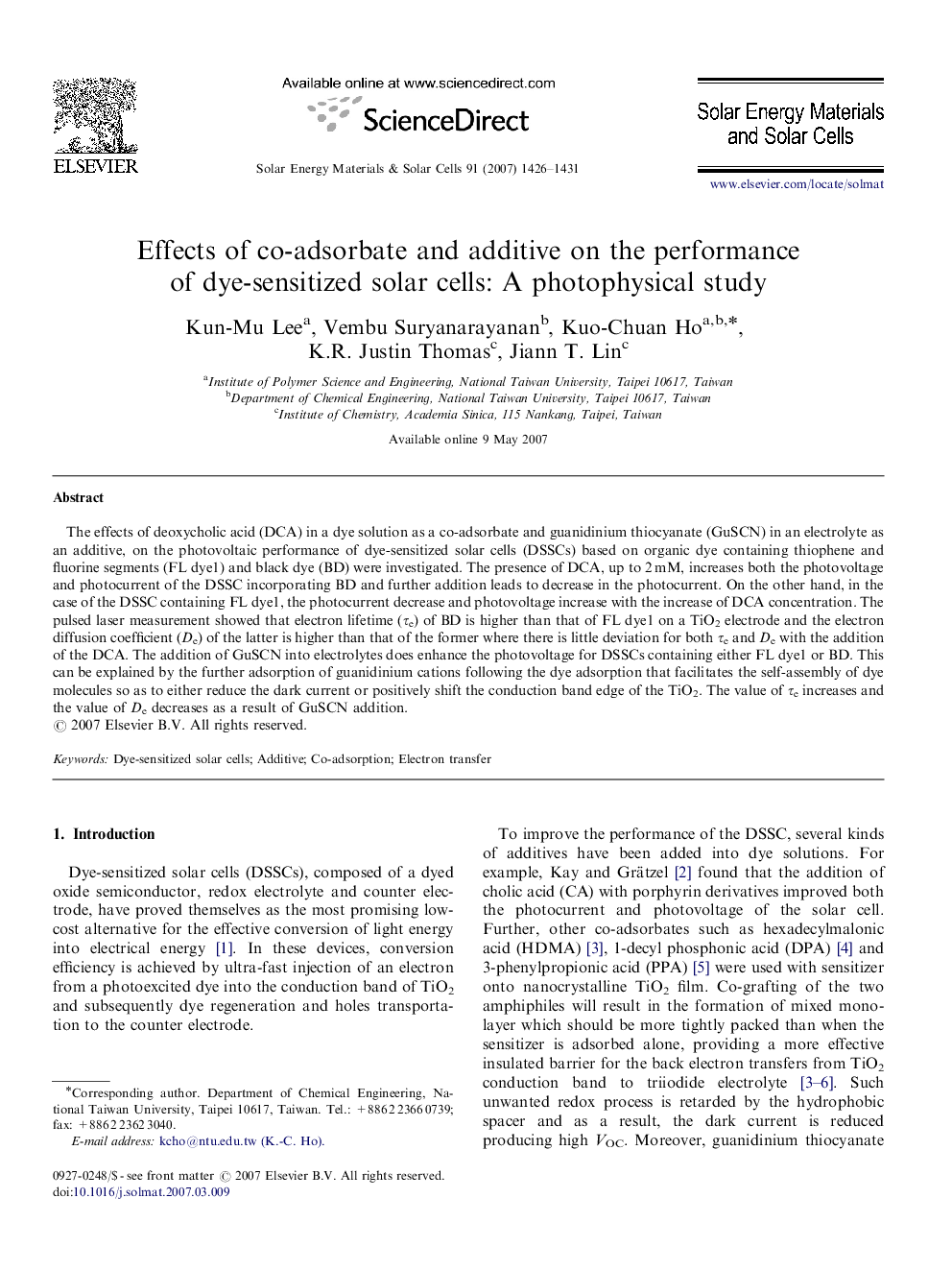| Article ID | Journal | Published Year | Pages | File Type |
|---|---|---|---|---|
| 80968 | Solar Energy Materials and Solar Cells | 2007 | 6 Pages |
The effects of deoxycholic acid (DCA) in a dye solution as a co-adsorbate and guanidinium thiocyanate (GuSCN) in an electrolyte as an additive, on the photovoltaic performance of dye-sensitized solar cells (DSSCs) based on organic dye containing thiophene and fluorine segments (FL dye1) and black dye (BD) were investigated. The presence of DCA, up to 2 mM, increases both the photovoltage and photocurrent of the DSSC incorporating BD and further addition leads to decrease in the photocurrent. On the other hand, in the case of the DSSC containing FL dye1, the photocurrent decrease and photovoltage increase with the increase of DCA concentration. The pulsed laser measurement showed that electron lifetime (τe) of BD is higher than that of FL dye1 on a TiO2 electrode and the electron diffusion coefficient (De) of the latter is higher than that of the former where there is little deviation for both τe and De with the addition of the DCA. The addition of GuSCN into electrolytes does enhance the photovoltage for DSSCs containing either FL dye1 or BD. This can be explained by the further adsorption of guanidinium cations following the dye adsorption that facilitates the self-assembly of dye molecules so as to either reduce the dark current or positively shift the conduction band edge of the TiO2. The value of τe increases and the value of De decreases as a result of GuSCN addition.
